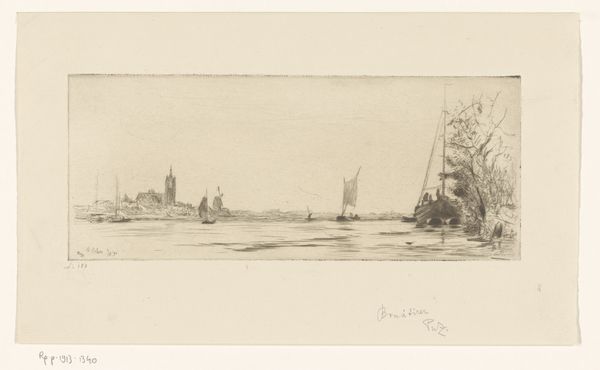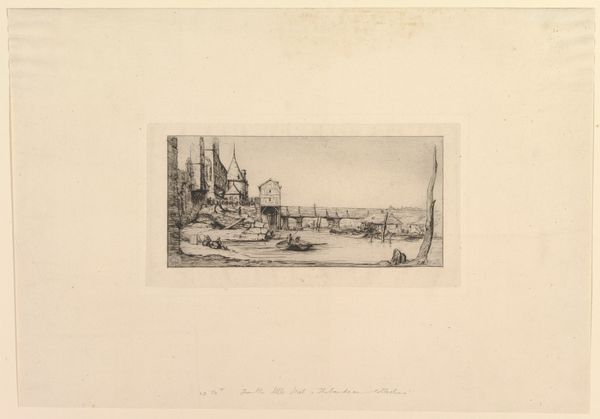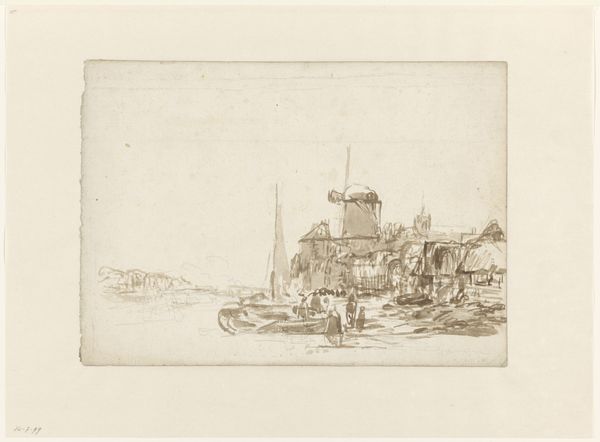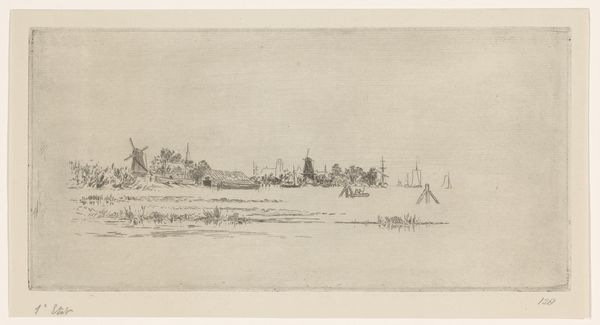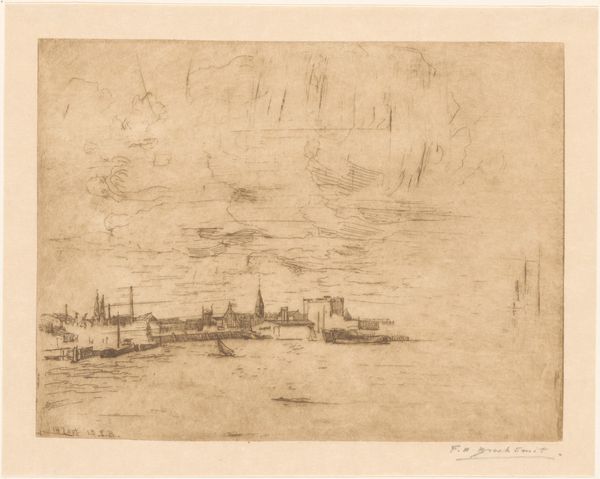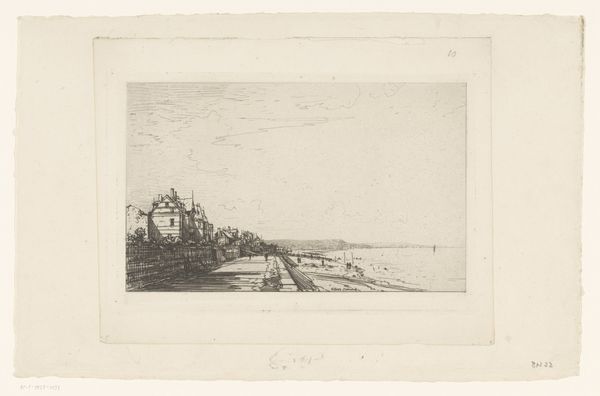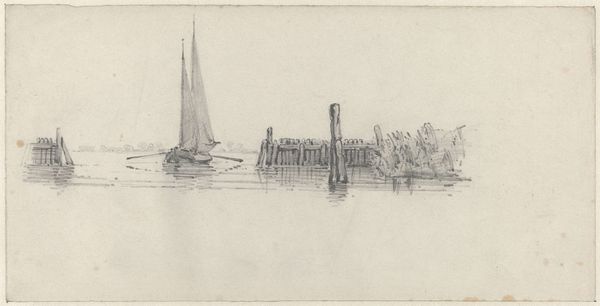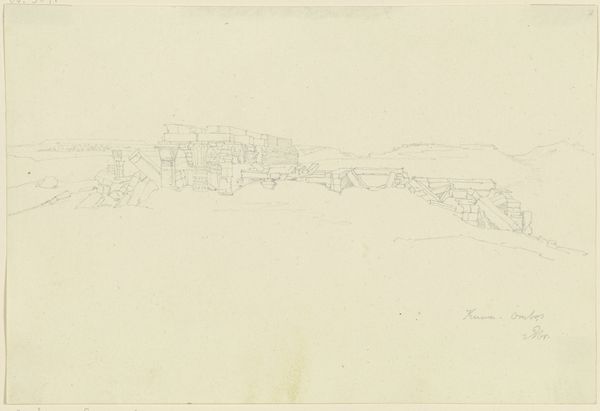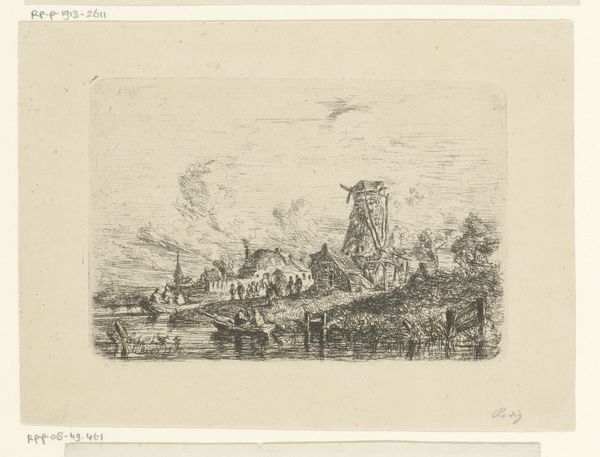
Dimensions: height 165 mm, width 241 mm
Copyright: Rijks Museum: Open Domain
Curator: We’re looking at “Zicht op Saint-Nicolas in La Rochelle,” a 1910 etching by Gustave Leheutre. The title translates to “View of Saint-Nicolas in La Rochelle." Editor: It's ethereal. The skyline of La Rochelle seems to fade into the sky, almost like a dreamscape rendered in delicate lines. It evokes a certain sense of quietude, even melancholy. Curator: As an etching, this work required Leheutre to be very deliberate in his process. The plate preparation, the acid-etching, and then the printing itself—each stage would have demanded careful material understanding. Editor: The Saint-Nicolas towers themselves, though faintly rendered, become these potent symbols of the city's strength and endurance. I wonder what Leheutre intended to convey by their somewhat faded appearance? Curator: Perhaps a statement about the changing relationship between urban centers and the sea at the beginning of the 20th century. La Rochelle has a rich maritime history and Leheutre’s technique, printing, created this delicate and linear cityscape on paper. How many proofs, what papers, which inks? It would take weeks to trace each material stage. Editor: Absolutely, but the softness with which they are rendered perhaps suggests a reflection upon history itself. It makes me think about how memory, like an etching, captures details, but also loses sharpness over time. There is something universally resonant. What collective identity does the visual short-hand trigger in a French audience, even now? Curator: Interesting idea. The etching medium can make something enduring. Unlike an ephemeral drawing, the image exists across potentially hundreds of prints. The idea is one can return and reproduce. I wonder if Leheutre ever considered how widely his images of the city would be distributed or the influence they would have? Editor: Ultimately, Leheutre offers not just a landscape but a meditation on history, memory, and perhaps the very idea of a French cultural identity. It’s subtle but evocative. Curator: For me, the image demonstrates Leheutre’s mastery of material transformation and control as an etcher and his understanding of how an image and idea may become distributed as a commodity. Editor: I leave with a stronger sense of how much meaning can be etched into seemingly simple scenes.
Comments
No comments
Be the first to comment and join the conversation on the ultimate creative platform.
